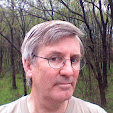 While organizing my books today I came across Godfrey Frankel's, Bike-Ways (New York, Sterling Publishing Co.: 1950). Browsing this optimistic text reminded me of a college friend who claimed that his biggest wish was that the modern, lightweight, fully-geared bicycle had been available at the end of the nineteenth century, as surely this would have thwarted the union of the industries of oil, automobile manufacture and tire manufacture in favor of bicycle transportation. Here are some of the opening remarks in Frankel's text:
While organizing my books today I came across Godfrey Frankel's, Bike-Ways (New York, Sterling Publishing Co.: 1950). Browsing this optimistic text reminded me of a college friend who claimed that his biggest wish was that the modern, lightweight, fully-geared bicycle had been available at the end of the nineteenth century, as surely this would have thwarted the union of the industries of oil, automobile manufacture and tire manufacture in favor of bicycle transportation. Here are some of the opening remarks in Frankel's text:
"The Bike Boom is on.

Not since the golden year of 1899, when cycles were more numerous than automobiles, has the United States seen anything like this."
"Already there are more than 18 million bike riders on the road, and with 3 million bikes in production this year, it seems likely that the two-wheelers will give their motor competitors a run for their money."
"Motor cars dominated the scene for the first half of the 20th century, and serious cycling was left to racers, faddists, youngsters, and old-timers who somehow never got over their first crush -- the bicycle. Self-propulsion was passé. Bike production dropped to a low of 250,000 units in 1933, when even in the midst of depression, the American family stuck to its jalopy."
"Today, it's a different story. Americans seem finally to have awakened from the onslaught of the car [...] They want to smell fresh country air, untainted by exhaust fumes."
Frankel continues with the virtues of cycling, it is "a palliative for our age," that leads to better emotional health, it is a good exercise, and embraces the attraction of youth hostels. "More and more, wives are using their cycles to market" and the bicycle is used for work in industry, on college campuses, and in hospitals. If, in the manner of Good Bye Lenin, Frankel had fallen into a coma in 1951 only to awaken today, how would we break it to him?
Original captions for the images:
All movable parts of the bicycle should be oiled regularly.
On jobs like patrolling and meter-maintenance at vast oil refineries, the workers cover ground and save time on their balloon-tire bikes.
!
 exhibition in Brooklyn, with all its sure signs of life. Here is Joseph Velasquez of Drive By Press carving a Mellanesque self-portrait on a van-mounted press bed.
exhibition in Brooklyn, with all its sure signs of life. Here is Joseph Velasquez of Drive By Press carving a Mellanesque self-portrait on a van-mounted press bed.















































